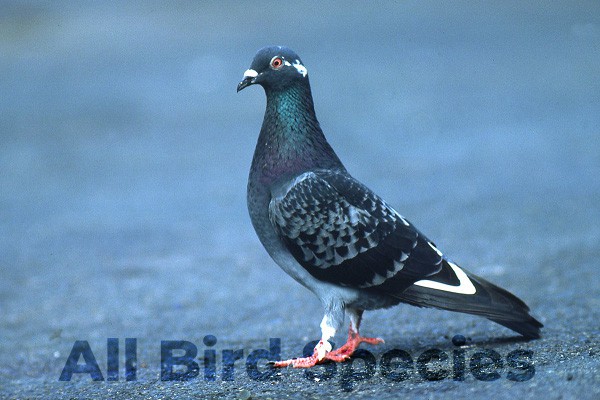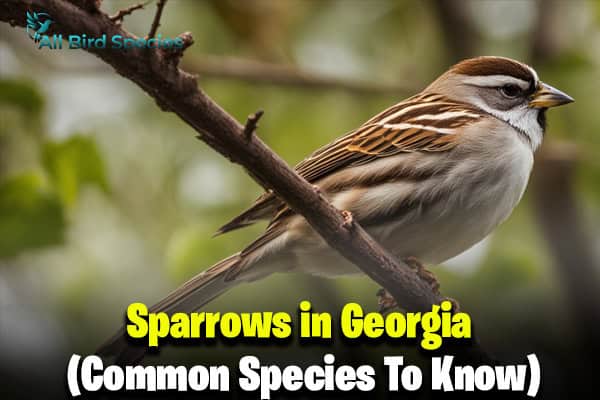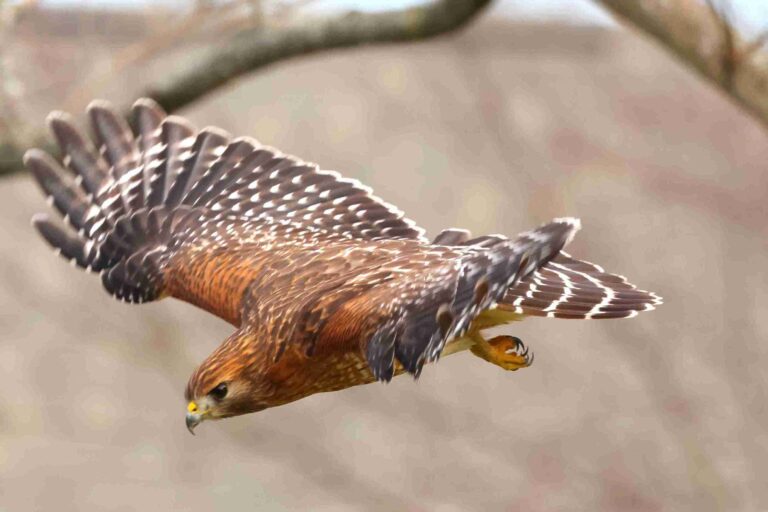7 Types Of Doves in Arizona (ID Guide With Pictures)
Did you know Arizona has over 12 doves species? We can spot seven types in our backyards and parks. These doves add beauty to our environment and are key to our ecosystem. Let’s explore the fascinating world of doves in Arizona together.
Let’s discover the physical traits, habitats, behaviors, and diets of these charming birds. Bird-watching in Arizona will become even more exciting!
What type of doves live in Arizona?
Arizona is home to several species of doves, each with its unique characteristics and habitat preferences. The most common types of doves that live in Arizona are:
- Mourning Dove (Zenaida macroura) – One of the most widespread dove species, found in various environments including cities, deserts, and forests.
- Common Ground-Dove (Columbina passerina) – A small dove often found foraging on the ground in deserts and scrublands.
- White-winged Dove (Zenaida asiatica) – Known for its distinctive white wing bands and association with the desert, especially near saguaro cacti.
- Eurasian Collared-Dove (Streptopelia decaocto) – A non-native species that has rapidly spread across North America and is commonly seen in urban areas.
- Band-tailed Pigeon (Patagioenas fasciata) – The largest dove species in Arizona, more commonly found in forested, mountainous regions.
These doves contribute to the rich birdlife in Arizona’s diverse ecosystems
1. Mourning Dove
- Scientific Name: Zenaida macroura
- Size: 9-13 inches long
- Weight: 4-6 ounces
- Lifespan: 1.5 years (wild), up to 5 years (in captivity)
- Diet: Seeds, grains, and small fruits
The Mourning Dove is perhaps the most iconic dove species in Arizona. Its name comes from its distinctive call, which sounds like a soft, mournful cooing. This bird can be seen throughout the state, often perched on telephone wires, fences, or feeding on the ground. Its muted brown and gray feathers make it well-camouflaged in desert and urban environments, but it is its soothing sound that often alerts people to its presence.

Mourning Doves are highly adaptable birds and can thrive in a variety of environments. They are commonly found in cities, rural areas, deserts, and even forests. Their diet primarily consists of seeds, which they forage on the ground. Due to their high reproductive rate, Mourning Doves are one of the most abundant bird species in North America. Their soft cooing and gentle demeanor make them beloved by birdwatchers and nature enthusiasts alike.
Diet and Breeding Behavior
Mourning Doves mainly eat seeds like millet and sunflower seeds. They like flat surfaces, so bird feeders are perfect for them. During the breeding season, they show amazing nesting skills.
Females can raise up to six broods a year. The nestlings need care for weeks, staying in the nest for up to 15 days. This shows how dedicated Mourning Dove parents are to their young.
2. Common Ground-Dove
- Scientific Name: Columbina passerina
- Size: 5-7 inches long
- Weight: 1-1.5 ounces
- Lifespan: 3-7 years
- Diet: Seeds, insects, and berries
The Common Ground Dove is one of the smallest dove species in Arizona, and it is often mistaken for a sparrow due to its size. This tiny bird is usually found on the ground, as its name suggests, where it forages for seeds and small insects. Unlike other doves that perch on high structures, the Common Ground Dove prefers to stay close to the ground, making it a unique sight for birdwatchers.

These doves are known for their brownish-gray bodies and distinctive reddish or pinkish wing patches that are visible during flight. Despite their small size, they are hardy birds that can be found in a variety of habitats, including deserts, scrublands, and agricultural fields. The soft, low “coo” of the Common Ground-Dove may not be as noticeable as the Mourning Dove’s call, but once you learn to recognize it, you’ll realize these birds are more common than they seem.
| Identifying Feature | Description |
|---|---|
| Back Color | Gray-brown |
| Underbelly Color | Faint pink |
| Head Size | Small |
| Breast Pattern | Distinctive and patterned |
These small birds not only add beauty to our surroundings but also play a significant role in the ecosystem as seed dispersers. Observing the Common Ground-Dove enriches our appreciation for the diversity of avian life in Arizona.
3. White-winged Dove
- Scientific Name: Zenaida asiatica
- Size: 10-12 inches long
- Weight: 5-6 ounces
- Lifespan: 1.5 years (wild), up to 10 years (in captivity)
- Diet: Seeds, grains, and fruits (especially from saguaro cacti)
The White-winged Doves of Arizona is a striking bird that can be easily identified by the white bands on its wings, visible both in flight and at rest. This species is native to the southwestern United States, including Arizona, and is commonly found in desert areas and urban environments. One of the unique traits of the White-winged Dove is its association with the saguaro cactus. During the summer, these doves rely heavily on the fruits of the saguaro for food and water.

In addition to their relationship with the desert flora, White-winged Doves are strong fliers and often travel great distances in search of food. Their loud, hooting calls can be heard from far away, making them one of the more vocal dove species in Arizona. While they are most common in the southern part of the state, White-winged Doves can also be found in other areas, especially during migration.
4. Eurasian Collared-Dove
- Scientific Name: Streptopelia decaocto
- Size: 12-14 inches long
- Weight: 5-7 ounces
- Lifespan: Up to 16 years (in the wild)
- Diet: Seeds, grains, and fruits
The Eurasian Collared-Doves of Arizona is a relatively recent arrival in North America, but it has quickly become a common sight in Arizona. These birds were introduced to the Bahamas in the 1970s and have since spread across the continent. They are larger than the Mourning Dove and have a distinctive black “collar” around the back of their neck, which makes them easy to identify.

Despite being newcomers, Eurasian Collared-Doves have adapted well to both rural and urban environments. They are often seen in parks, gardens, and agricultural fields, where they feed on seeds and grains. Their call is a repeated “coo-coo-coo” that is deeper and more resonant than other dove species. Eurasian Collared-Doves are also known for their strong pair bonds, often remaining with the same mate for life.
5. Band-tailed Pigeon
- Scientific Name: Patagioenas fasciata
- Size: 14-16 inches long
- Weight: 8-14 ounces
- Lifespan: 6-10 years (in the wild)
- Diet: Berries, seeds, acorns, and fruits
The Band-tailed Pigeon is the largest of the dove species found in Arizona. Unlike the other doves on this list, the Band-tailed Pigeon is more commonly found in forested areas, particularly at higher elevations. These pigeons have a distinctive dark band on the end of their tail, which gives them their name. They also have a unique purplish-gray coloration and a yellow beak, which sets them apart from other species.

Band-tailed Pigeons are strong fliers and often travel in flocks. They feed on a wide variety of foods, including seeds, fruits, and acorns. In Arizona, they are most commonly found in the mountainous regions, especially during the breeding season. The Band-tailed Pigeon’s call is a soft, owl-like “whoo-whoo” sound that echoes through the forest. Although they are not as common in urban areas as other dove species, they are fascinating birds to observe in their natural habitat.
Feeding Habits
This bird mainly eats seeds, berries, and fruits. It often eats with a big group. Watching them is a joy for anyone who loves nature.
| Characteristic | Description |
|---|---|
| Size | Larger than typical doves |
| Coloration | Purple-gray underparts, gray body |
| Bill | Yellow with a dark tip |
| Neck Band | Prominent white neck band |
| Diet | Seeds, berries, and fruits |
| Behavior | Forages in large groups |
6. Rock Pigeon
The Rock Pigeon of az is a common sight in cities. They live well with humans in many places. It’s easy to spot them because of their unique features.

Identifying Characteristics
Rock Pigeons are sturdy and come in different colors. You might see them in gray, all-white, or rusty brown. They have small heads and short legs. Their soft coos are often heard in cities.
Their colors help them fit in well in many places. This makes them a key part of city life.
Behavior and Habitat
In Arizona, Rock Pigeons like to be around people. They hang out in parks and streets, looking for food. They also visit bird feeders, so you might see them in your yard.
They’re used to being around humans. This lets us get a good look at them.
| Characteristic | Description |
|---|---|
| Build | Stocky with a small head and short legs |
| Plumage | Varies from gray to all-white and rusty-brown |
| Call | Cooing sounds are common in urban settings |
| Feeding Behavior | Attracted to scraps and bird feeders |
| Social Behavior | Typically found in large, noisy flocks |
Rock Pigeons add color and life to cities. They also show us how wildlife can adapt to city life.
The Importance of Doves in Our Ecosystem
Doves are key players in Arizona’s ecosystem. They help spread seeds, which boosts plant growth and variety. By eating seeds, doves help plants grow, making the environment more diverse.
Having doves around is good for wildlife. They are food for bigger animals and keep the ecosystem balanced. Their digging and eating habits also help the soil, making it better for plants and other animals.
Doves make birdwatching more exciting and educational. Watching them in nature lets us see their beauty and learn about their role in the ecosystem.
Read More🐦Related Articles:
- Owls in Louisiana
- Doves in Michigan
- Largest Birds of Prey
- Swallow Spiritual meaning
- Blue Colored Birds
- Hummingbirds in Maryland
Conclusion
Arizona’s diverse landscapes provide a perfect home for many species of doves, each with their own unique adaptations and characteristics. From the common Mourning Dove with its soothing coo to the striking White-winged Dove that thrives in the desert, these birds are an integral part of Arizona’s natural environment. Whether you are in a bustling city, a quiet desert, or the serene mountains, you are likely to encounter one of these beautiful species. Birdwatchers and nature lovers alike are sure to appreciate the subtle beauty and peaceful presence of Arizona’s doves.
If you ever find yourself outdoors in Arizona, keep an eye and ear out for these gentle creatures. You might be surprised at just how many doves call this state home.







